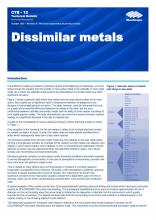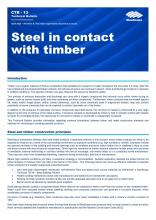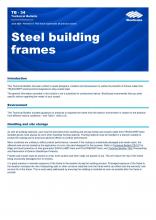Warning
Please be advised this website is for internal review purposes only and is not to be distributed until advised.
Please be advised this website is for internal review purposes only and is not to be distributed until advised.
Galvanic corrosion occurs when two dissimilar metals are in direct contact or are bridged by an electrolyte, such as moisture. A current can then flow through the electrolytic solution from one metal (the anodic or more active metal) to the other metal (cathodic or more noble/stable metal). As a result, the cathodic metal tends to be protected but the anodic metal may suffer significant corrosion.
An example of this is where a stainless-steel screw is placed in a Light Gauge Steel (LGS) frame. A current may then flow from the LGS (anode) to the stainless-steel fastener (cathode) and the LGS may, over time, suffer corrosion.
Incompatible components must be isolated from coated steel frames or trusses. This is best achieved via an air-gap or by use of an impermeable membrane. Grommets or polyethylene packers can also serve this purpose.
Fasteners made from stainless steel, copper, brass etc. are not allowed under any circumstance because they cannot be isolated from the LGS steel. More information can be obtained from NASH standards.
BlueScope’s Corrosion Technical Bulletin 12 provides a summary of materials that can safely be used with LGS framing and those materials that need to be isolated from the frame.
Timber (treated or untreated) can be used, for example as a noggin, but needs to be isolated from the LGS using a membrane. The recommended method of isolation is with an impermeable membrane such as the material used for damp course applications.
BlueScope’s Corrosion Technical Bulletin 13 provides further information on isolating steel in contact with timber.

This corrosion technical bulletin outlines: The basis of dissimilar metal corrosion with reference to the galvanic series of metal and alloys in sea water; Table of compatibility of direct contact between metals or alloys when choosing fasteners and accessories.

This corrosion technical bulletin provides information regarding common interactions between timber and metal construction elements and methods for minimising or avoiding possible corrosion.

This Technical Bulletin has been written to assist designers, builders and homeowners to realise the benefits of frames made from TRUECORE® aluminium/zinc/magnesium alloy-coated steel.

The NASH Standard is available to purchase on the NASH website in either PDF or hardcopy format.

In marine zones, a greater level of isolation is required. Find out more!